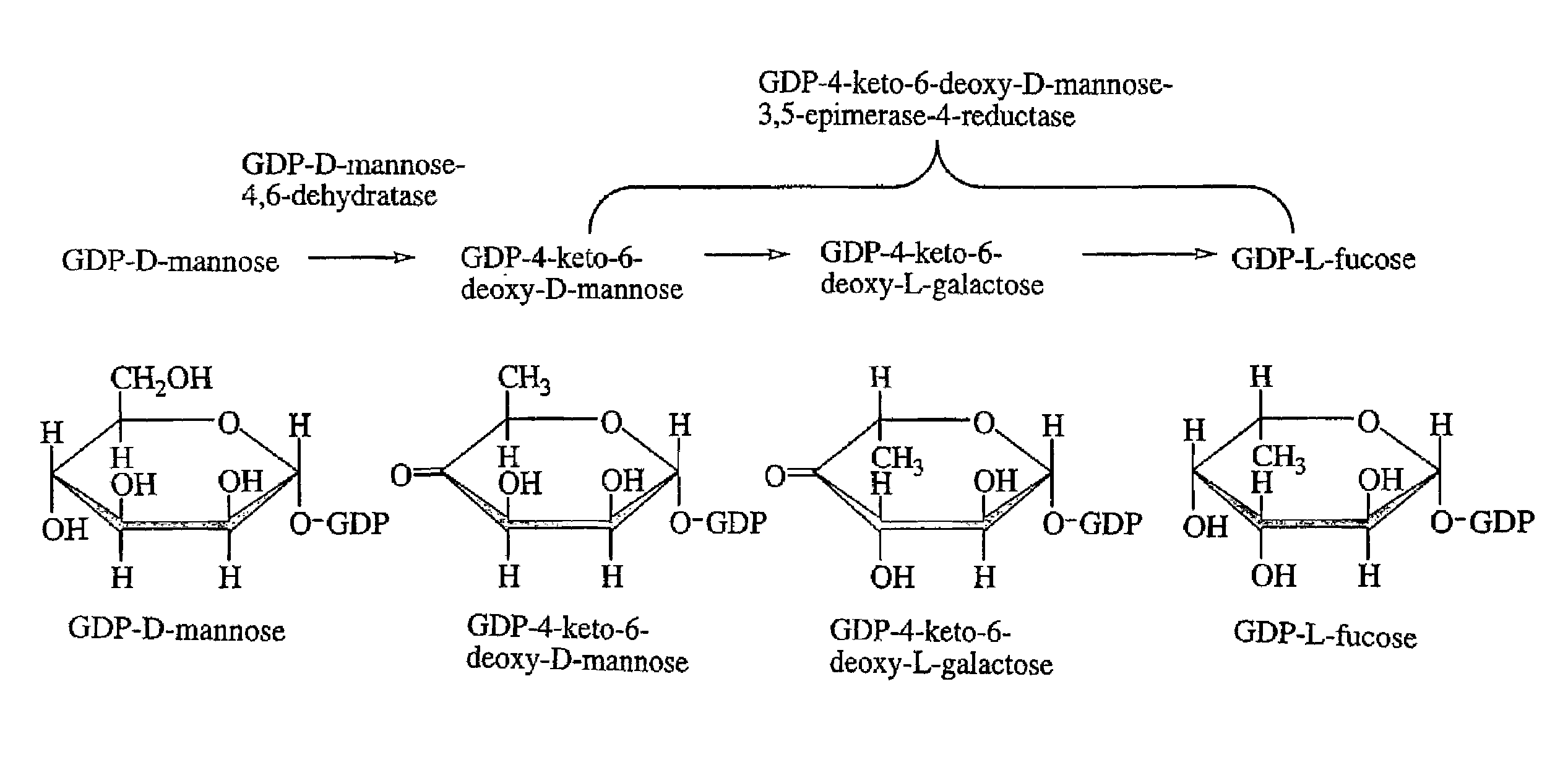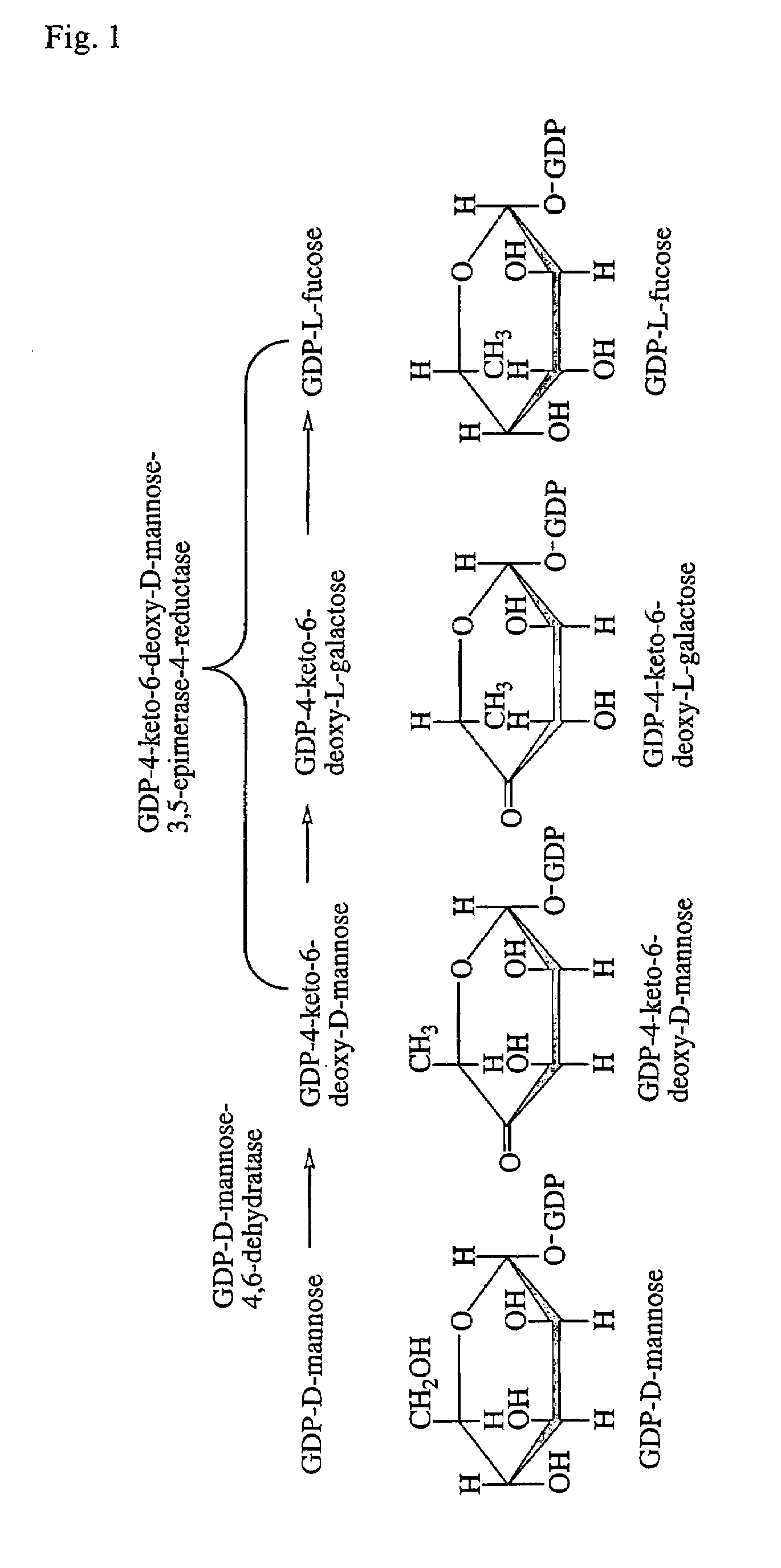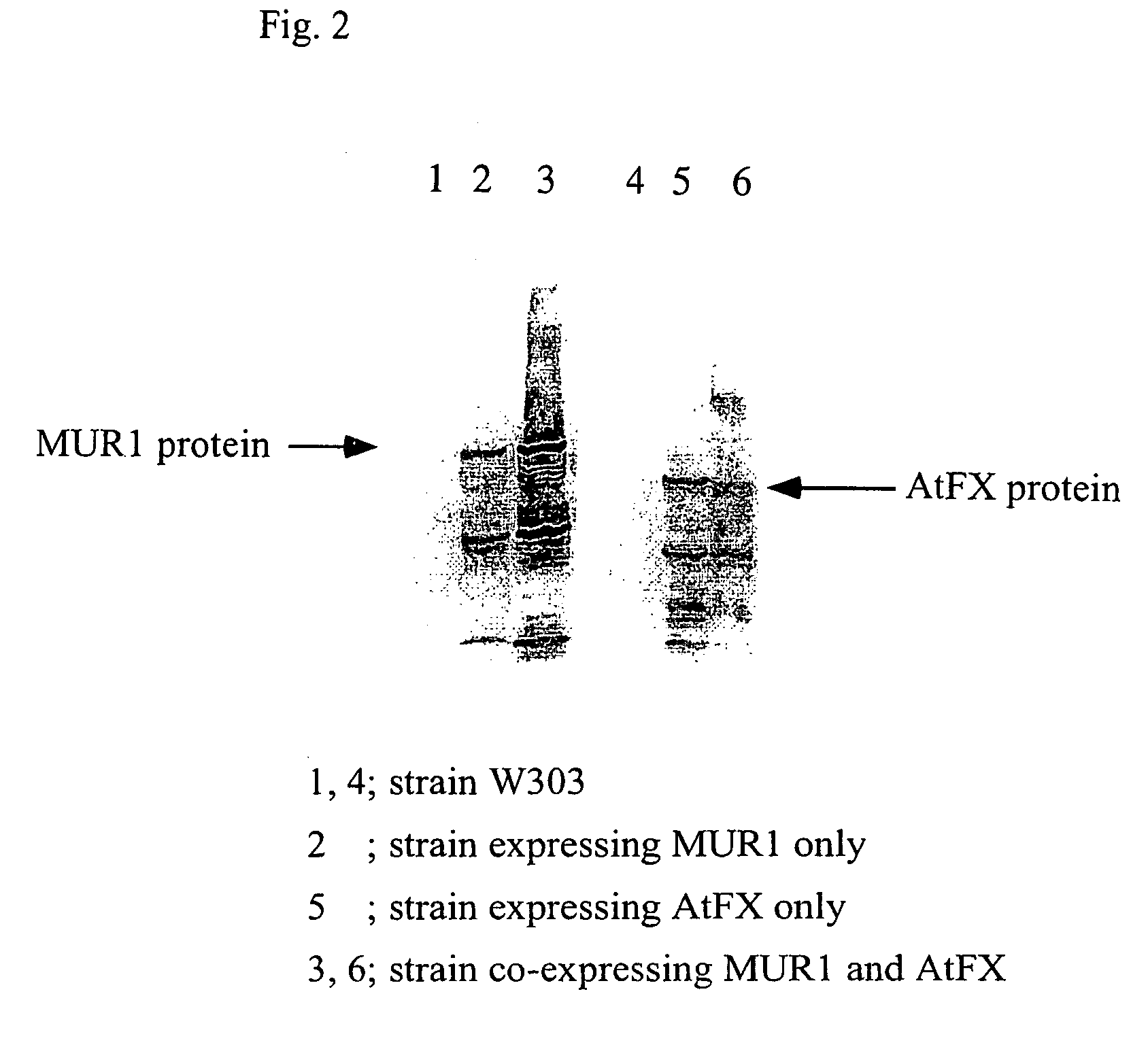Gdp-4-keto-6-deoxy-d-mannose-3,5-epimerase-4-reductase gene derived from arabidopsis thaliana
a technology of gdp-l-fucose and keto-6, which is applied in the field of gene of an enzyme, can solve the problems of prohibitively high cost of sugar nucleotide production, inability to easily provide and inability to easily synthesize all the types of sugar chains. , to achieve the effect of efficient synthesizing gdp-l-fucos
- Summary
- Abstract
- Description
- Claims
- Application Information
AI Technical Summary
Benefits of technology
Problems solved by technology
Method used
Image
Examples
example 1
Isolation and Sequencing of AtFX Gene
[0080]Using the cDNA library of Arabidopsis (Arabidopsis thaliana), AtFX gene was cloned by the PCR method. QUICK-Clone cDNA (CLONTECH) was used as the cDNA library.
[0081]Primers were designed based on the nucleotide sequences submitted to a database (DB name: GenBank; Accession Nos: U38473, U58766 and AF045286). At this time, primers were designed to previously contain KpnI site on the N-terminal portion, and EcoRv site on the C-terminal portion, so that the portion encoding a protein could be easily cleaved by a restriction enzyme, and a gene for labeled antigen or the like could be easily inserted. The nucleotide sequences of the respective primers are as shown below.
5′-ATTGGTACCATGTCTGACAAATCTGCCAAAATCTTCGTC-3′
(SEQ ID NO: 3)
5′-TTAGTCGACGATATCTCGGTTGCAAACATTCTTCAAATACCAATCATAAG-3′
(SEQ ID NO: 4)
[0082]Here the underlined portion in the nucleotide sequence of the forward primer denotes KpnI site, and that in the nucl...
example 2
Production of AtFX Gene Expression Vector and MUR1 Gene Expression Vector, and Production of Yeast Transformant Containing These Plasmids
[0087]3xMyc gene (Evan et al., Mol. Cell Biol., Vol. 5, 3610 (1985)) encoding a labeled antigen was inserted into EcoRV site in AtFX gene that had been inserted in pCR2.1 vector, in-frame with AtFX gene. AtFX gene containing the Myc gene was cleaved out with KpnI-XhoI. The fragment was inserted into KpnI-SalI site in expression vector YEp352GAP-II which had been prepared by replacing the multicloning site of yeast expression vector YEp352GAP (Roy et al., J. Biol. Chem., Vol. 273, 2583 (1998)) with the EcoRI to SalI portion of the multicloning site of pUC18. Further, a fragment comprising three portions: GAPDH promoter, AtFX-Myc, and GAPDH terminator, was cleaved out using BamHI from the vector. The fragment was inserted into BamHI site in yeast multi-copy vector pY0325 (Qadota et al., Yeast, Vol. 8, 735 (1992)) containing LUE2 marker, thereby const...
example 3
Expression of MUR1 Protein and AtFX Protein Within Yeast
[0091]Whether the proteins were expressed in each cell of the transformants obtained in Example 2 was confirmed by Western blotting.
[0092]First, the above transformants (strain W303 / YEp-MUR1-HA, strain W303 / pYO-AtFX-Myc, and strain W303 / YEp-MUR1-HA, pYO-AtFX-Myc) and strain W303 were separately cultured on SD media at 30° C. for 24 hours, and then the obtained yeast cells were disrupted with glass beads. The disrupted products were centrifuged (100,000×g, 4° C., 60 min) to separate only a cytoplasm fraction, so that only a protein fraction was precipitated using 75% ammonium sulfate. The protein precipitation fraction was dissolved in 20 mM Tris-HCl (pH 7.5) containing 0.5 mM DTT, and desalted with Sephadex G50 (Pharmacia, 20 mM Tris-HCl containing 0.5 mM DTT, pH7.5, 1.3 cm×2.6 cm) to obtaine enzyme solutions. The proteins in the enzyme solutions were determined using BCA kit (RIERCE). The enzyme solutions, each corresponding t...
PUM
| Property | Measurement | Unit |
|---|---|---|
| temperature | aaaaa | aaaaa |
| temperature | aaaaa | aaaaa |
| temperature | aaaaa | aaaaa |
Abstract
Description
Claims
Application Information
 Login to View More
Login to View More - R&D
- Intellectual Property
- Life Sciences
- Materials
- Tech Scout
- Unparalleled Data Quality
- Higher Quality Content
- 60% Fewer Hallucinations
Browse by: Latest US Patents, China's latest patents, Technical Efficacy Thesaurus, Application Domain, Technology Topic, Popular Technical Reports.
© 2025 PatSnap. All rights reserved.Legal|Privacy policy|Modern Slavery Act Transparency Statement|Sitemap|About US| Contact US: help@patsnap.com



